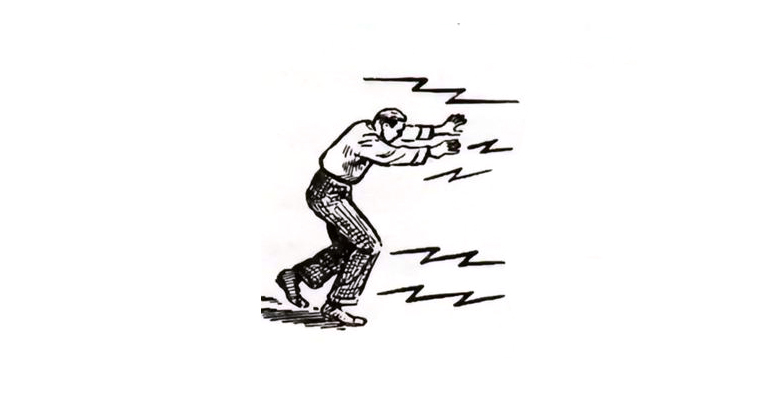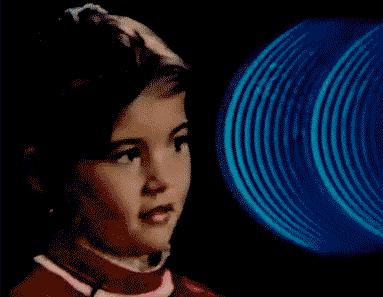This is the editorial note to TNI Vol. 37: Vibes. View the full table of contents here.
Subscribe to TNI for $2 and get Vibes (and free access to our archive of back issues) today.

English sometimes lacks a precise vocabulary for describing emotional atmosphere, but to make up for it, “vibes” exists to capture both the entity and the action. With February so ill-suited for grand, expansive feels, it’s the perfect month to vibe out. The affective chill that falls over the Northern Hemisphere as it endures in relative darkness makes space for few intense emotional vistas, except, maybe, those of madness and despair. Such mass-affective unity—as anyone who has been online or in a riot can also attest—reveals just how much more is involved in our feels than individual responses to sensory stimuli.
Self-satisfied empiricism scoffs at any attention to the reality of the invisible. But this viewpoint doesn’t even notice its blindness to touch, smell, or sound, let alone the ways in which visibility is doled out to some and not to others. The awareness that perception leaks into us through more than just our orifices is unsettling, true. And it is disarming to confront what exceeds the charts and tables of the countable. But it is only through critical attunement to the vibes that spill out from the legible order of the world that a full accounting of our position in it is possible.
In resonating through the large, rigid categories of the social, vibes travel far beyond their point of origin. Thanks to the derision they receive from the order of the tangible, they can pass unimpeded through logjams of more important material. A debt to such known unknowns appears again and again in the testimony of people with political insight, creative genius, empathy and care, prescience and luck, mystical powers or religious gravitas.
Maybe someday neuroscientists and psychologists will discover that mysterious balance of gut feelings, unconscious sensory alerts, social structures and empathetic resonance and pin vibes down once and for all. But maybe such a pinning is impossible. Maybe vibes are the exact point where the lived reality of the social breaks fundamentally with its own “empirical” self-definition. It’s objectively more fun to give credence to the ripples of attention, affect and knowledge that traverse social bodies as another reality, but we definitely can’t prove it. It’s just a feeling we have.
In this issue, Christina Agapakis explains how the vibration theory of smell exposes a troubling aspect of science. The smelly world and the neural mechanisms which parse it are well understood, but how exactly the two relate is still a mystery. A maverick researcher holds that molecules’ quantum vibrations trigger smell receptors, but the olfaction establishment won’t have any of it. Though idealized as the place where the best explanations of the world win out, the scientific community is as irrational as any community of humans, and just as susceptible to making institutional decisions based on vibes individuals give off. Something is fishy.
An excerpt from Adam Kotsko’s forthcoming book, Creepiness, shows us the ways in which the mundane word is actually rich with philosophical nuance. The widely-felt revulsion at Burger King’s “Creepy King” ad campaign reveals the obscene demand Burger King’s very existence places on consumers, as well as the excessive nature of sexual desire, bringing us to Freud’s often-cited concept of the uncanny, which Kotsko argues is better translated as “creepy.” In “Bad Vibes,” Amanda Mae Yee recounts her experience being followed around London by a stranger, and how she had to fight against a concept of rationality to convince friends of the danger she was in. The devaluing of “women’s intuition” is part of a larger process of denying true speech to people most at risk of harm, which then conveniently figures any protest on their part as unreliable. After all, “bad vibes” euphemizes the danger we can be barred from naming by the censure of that danger itself.
Ashon Crawley turns his attention to black social dance and the ways its choreographies make manifest an “otherwise” relation to reality. “We are a people that have been thought to be nothing. We are the tradition of the ain’t nothin but,” he writes, lauding the resistance movement that blossomed from Ferguson, Mo., a place that only last July was a “nothingness we didn’t need to think.” Taking black radicality as a ground for change that is founded in movement, in vibration, produces a critique of the normative world.
Sophia Coppola’s lush, emotionally-layered Virgin Suicides comes up for praise in “Teenage Scream” The extremes of adolescent emotion render questions of authenticity moot, as they throb with overwhelming reality, fake or not. For Esmé Weijun Wang, schizophrenia makes immersing herself in certain films too dangerous, their fictional nature compounding the fact that her condition already makes it hard to discern which delusions are her own and which are collectively decided upon by society to form the structure of reality itself.
In Messiah Rhodes’ “Scary Negroes With Guns,” the specter of firearms in black hands is too frightening for white people to contemplate cooly, leading to the centuries-long spree of bloody suppression by the feds and vigilantes arm in arm. The mere image of black people fighting against white supremacy is itself a threat, which is why whether or not a gun is present is never the question for a gun owner. Whiteness is the power to weaponize an unreality, with hair trigger vibes.
In all of this, vibes are the realest unreal. Vibes are the catch-all that lets the drama of our unease or enthusiasm go unnamed. They’re the motion felt during our own stillness. If vibes are the only constant between the transmission and reception of emotional knowledge across ever shifting matrices, then we hope our attempt to gauge vibes invites good ones.
